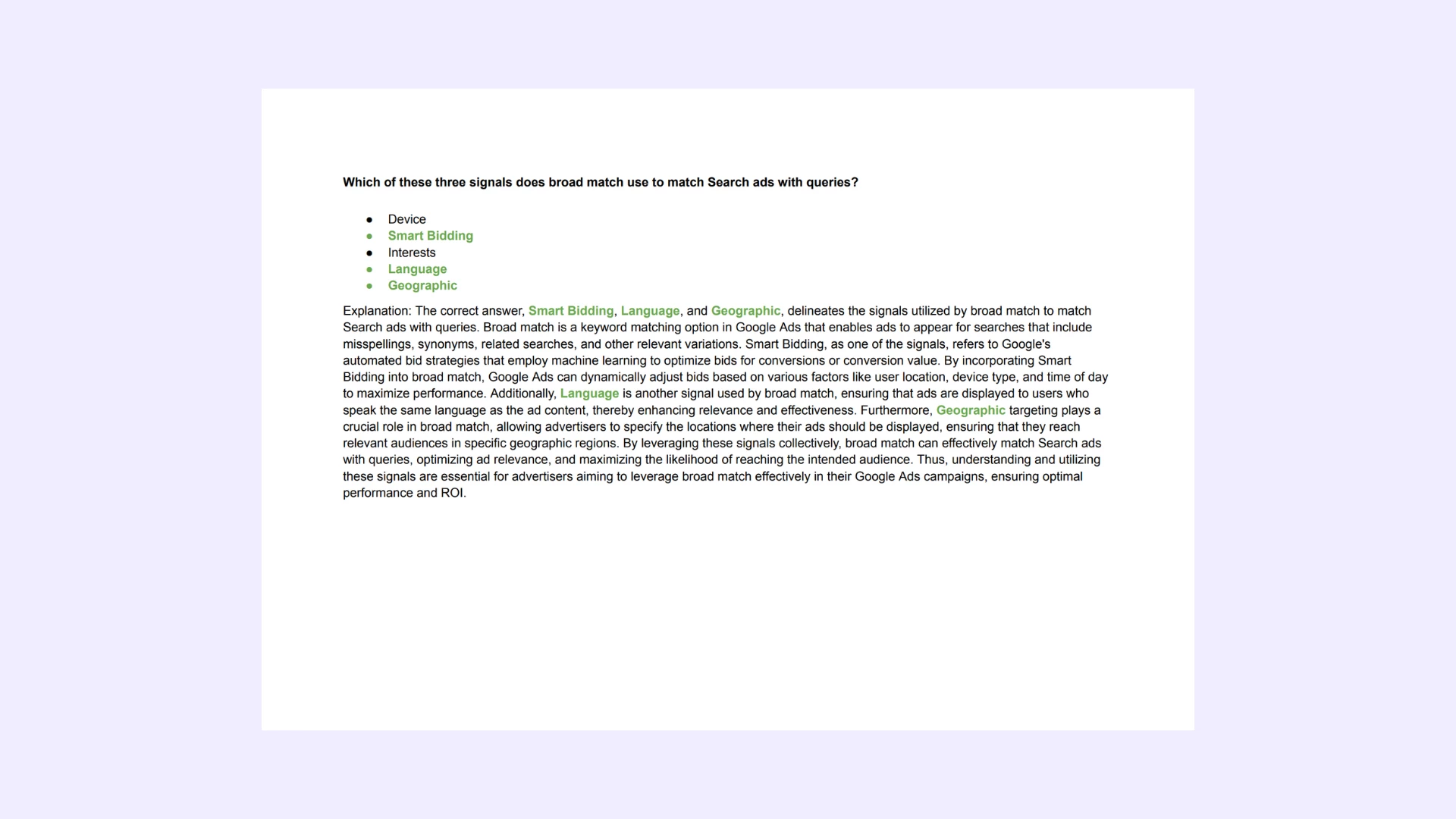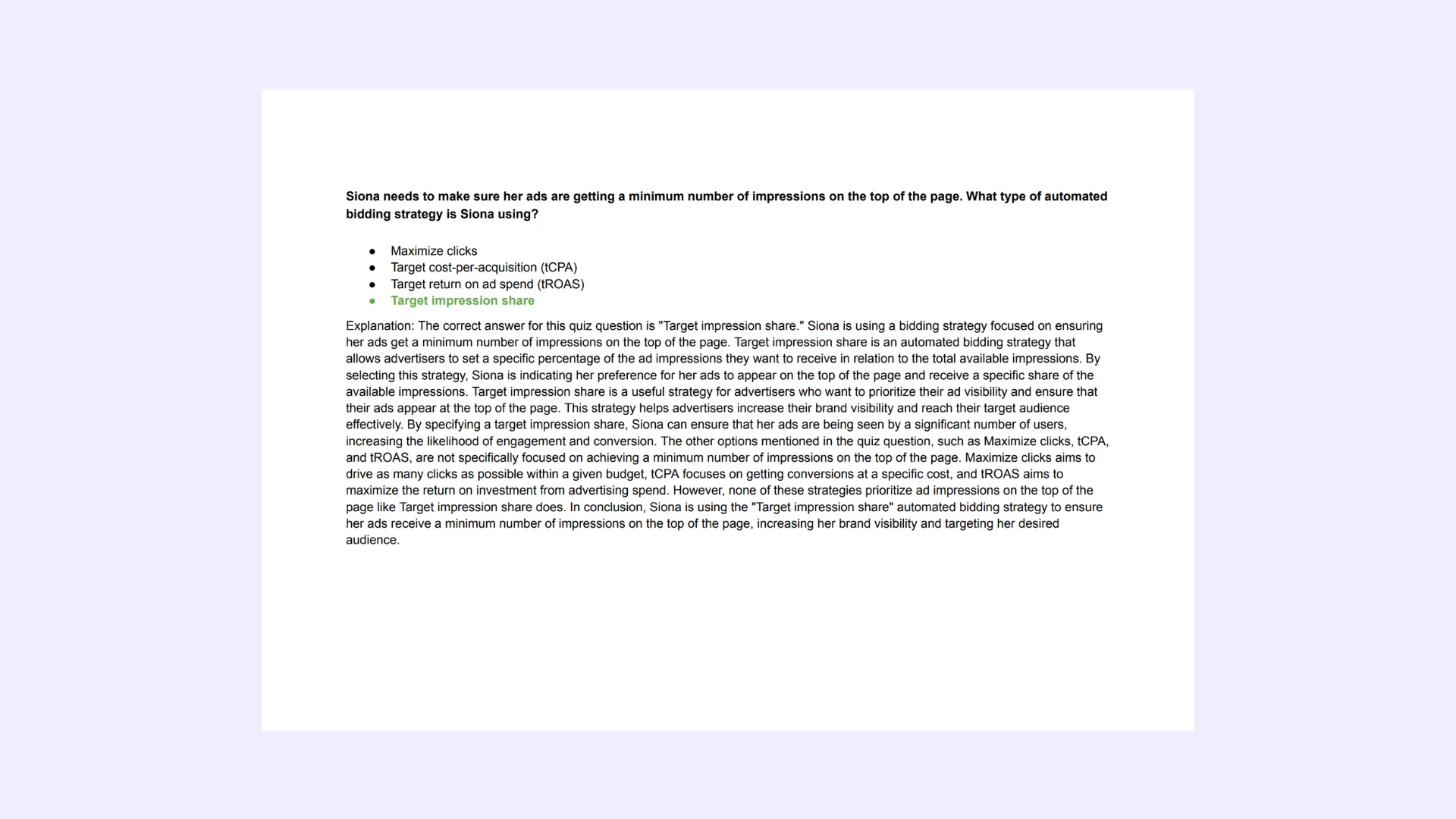If by comparing Google Ads data with offline data you find a difference in the number of sign-ups for ads between the two sources, and you believe the issue lies with when a conversion was counted, what's the likely source of that data discrepancy?
It's probably due to the fact that Google Ads reports conversions against the date/time of the click that led to the conversion. Depending on the other data source, it might use the date/time of the conversion itself.
It's probably due to the fact that Google Ads reports clicks against the date/time of the event that led to the conversion. Depending on the other data source, it might use the click of the conversion itself.
It's probably due to the fact that Google Ads reports views against the device type of the view that didn't lead to a conversion. Depending on the other data source, it might use the date/time of the conversion itself.
It's probably due to the fact that Google Ads reports conversions against a unique ID of the event that led to the click. Depending on the other data source, it might use the click of the conversion itself.
Choose an option to see if it’s correct. Check the explanation below. Learn Smarter, not Harder.

Google Ads Roll. Includes Answers for Every Real Google Ads Certification Exam.
All-in-One: Get all Google Ads exams answers with explanations in one bundle. This package includes answers for every current Google Ads certification. Regular updates to reflect the latest exam version. -> See what's included.
Questions | Answers | Explanations. Free Lifetime Updates.


Need a single cerification exam answers? Check out our -> list of certification exams answer keys. Learn Smarter. Obtain or Renew your certificates with peace of mind!
Explanation: If by comparing Google Ads data with offline data you find a difference in the number of sign-ups for ads between the two sources, and you believe the issue lies with when a conversion was counted, what’s the likely source of that data discrepancy?
Explanation: The correct answer is **'It's probably due to the fact that Google Ads reports conversions against the date/time of the click that led to the conversion. Depending on the other data source, it might use the date/time of the conversion itself.'** This answer accurately identifies a common source of data discrepancy between Google Ads and offline data when comparing the timing of conversions. Google Ads typically reports conversions based on the date and time of the click that led to the conversion. However, other data sources, such as offline tracking systems, may record conversions based on the date and time the conversion actually occurred, which could differ from the click time. This difference in reporting methods can result in discrepancies in the number of sign-ups attributed to ads between the two sources. Understanding this discrepancy is crucial for accurately analyzing campaign performance and reconciling data from various sources. Therefore, the selected answer provides a plausible explanation for the data discrepancy and highlights the importance of considering differences in reporting methodologies when comparing data from different sources.
Were do I find this certification program?
This certification program is available on the Google SkillShop Platform. With our file, you can get certified in just a few minutes. Free updates are included.
Save time on exams and spend more time practicing.
Best-value Guides
- Special Bundle Offer Google_Ads_Roll
- Special Bundle Offer HubSpot_Exams_Roll
- Special Bundle Offer Google_SkillShop_Roll
- Special Bundle Offer Marketing_Platforms_Roll